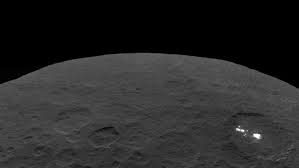
Breaking News
 US Oil Blockade of Venezuela Pushes Cuba Into Economic Collapse
US Oil Blockade of Venezuela Pushes Cuba Into Economic Collapse
 Gold and Silver Surge to New Record Highs, What's Going On?
Gold and Silver Surge to New Record Highs, What's Going On?
 Silver And Copper Are Both Flashing The Same Signal -- And That Is Setting The Stage...
Silver And Copper Are Both Flashing The Same Signal -- And That Is Setting The Stage...
 I Spoke At Turning Point USA - FULL SPEECH
I Spoke At Turning Point USA - FULL SPEECH
Top Tech News
 Perfect Aircrete, Kitchen Ingredients.
Perfect Aircrete, Kitchen Ingredients.
 Futuristic pixel-raising display lets you feel what's onscreen
Futuristic pixel-raising display lets you feel what's onscreen
 Cutting-Edge Facility Generates Pure Water and Hydrogen Fuel from Seawater for Mere Pennies
Cutting-Edge Facility Generates Pure Water and Hydrogen Fuel from Seawater for Mere Pennies
 This tiny dev board is packed with features for ambitious makers
This tiny dev board is packed with features for ambitious makers
 Scientists Discover Gel to Regrow Tooth Enamel
Scientists Discover Gel to Regrow Tooth Enamel
 Vitamin C and Dandelion Root Killing Cancer Cells -- as Former CDC Director Calls for COVID-19...
Vitamin C and Dandelion Root Killing Cancer Cells -- as Former CDC Director Calls for COVID-19...
 Galactic Brain: US firm plans space-based data centers, power grid to challenge China
Galactic Brain: US firm plans space-based data centers, power grid to challenge China
 A microbial cleanup for glyphosate just earned a patent. Here's why that matters
A microbial cleanup for glyphosate just earned a patent. Here's why that matters
 Japan Breaks Internet Speed Record with 5 Million Times Faster Data Transfer
Japan Breaks Internet Speed Record with 5 Million Times Faster Data Transfer
Sun sets on Dawn spacecraft's asteroid belt mission

Having eliminated other possibilities, the Dawn team has concluded that the unmanned spacecraft has finally run out of the hydrazine propellant needed to point its radio antenna at the Earth and its solar panels at the Sun.
The Dawn probe is currently about 257 million mi (414 million km) from Earth in orbit around the dwarf planet Ceres, the largest and most massive body in the asteroid belt between Mars and Jupiter. NASA says that the now derelict spacecraft is following strict protocols to protect the unusual chemistry of Ceres and is expected to remain in orbit for at least 20 years, with a 99 percent chance that it will still be in orbit in 50 years.
Dawn was launched on July 7, 2007 at 7:34 am EDT from pad 17B at the Cape Canaveral Air Force Station on a Delta 7925-H rocket. Once the probe reached escape velocity, its three ion thrusters used xenon propellant to accelerate it to the velocity required to reach the asteroid belt. The then state-of-the-art thrusters worked by electrically charging xenon atoms and then propelling them aft to generate thrust. This thrust wasn't much – only about 90 mN, or about that generated by the weight of a sheet of paper – but the engines could fire for weeks or even months at a time to build up a surprising head of speed across 4.3 billion mi (6.9 billion km) of space.
In 2011, Dawn went into orbit around the dwarf planet Vesta, the second largest body in the asteroid belt. This was the first time a probe had achieved orbit around an object in the belt, but Dawn scored an even bigger first when it left Vesta under power and proceeded to Ceres, which it orbited in 2015. This was not only the first visit to Ceres, but also the first time a spacecraft had gone from Earth to another body, then left that body to go on to orbit a third.

 Advanced Propulsion Resources Part 1 of 2
Advanced Propulsion Resources Part 1 of 2

